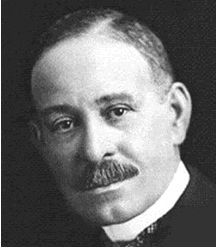Aloyisus Leon Higginbotham, Jr. was born on February 25, 1928, in New Jersey. At 16 Higginbotham enrolled in Purdue University. He chose Purdue because it
admitted black students; was cheaper, at that time, than Rutgers University. He
and the other 11 black students
were placed in a building called International House, which was the only
building that blacks could live in West Lafayette. The students slept in the attic, which
was unheated. This and other events like it caused him to pursue a
career in the law. Higginbotham transferred to Antioch College in Yellow
Springs, Ohio the next year. While there, he served as the head of the college chapter of the NAACP.
Higginbotham earned his Bachelors of Arts in 1949 and later that year
entered Yale Law School. During his time there, he was a member of the school’s
moot court team and its Barrister’s Union. Four years later, Higginbotham
earned his Bachelors of Law and went on become Yale’s first melaninite trustee.
Higginbotham also advocated opening the school to women. Higginbotham started his career working for
the Philadelphia County Court of Common Pleas as a law clerk for Judge Curtis
Bok. Soon after he was hired as assistance district attorney becoming the first
melaninite to ever argue on behalf of the Commonwealth of Pennsylvania in the
Courts of Common Pleas. He was also given the opportunity to argue in front of
the state’s Pennsylvania. In 1954, Higginbotham went into private practice as a
member of the first melaninite law firm in Philadelphia. Each of the partners
or Norris, Schnidt, Green, Harris, and Higginbotham went on to become judges
except the lead name J. Austin Norris.
In 1962, Higginbotham was appointed to the Federal Trade
Commission by President John F Kennedy making him the youngest and first melaninite
to ever serve on a federal regulatory commission. Six years later, President
Lyndon Johnson nominated him as a federal judge in the Eastern District of
Pennsylvania where he became one of the youngest people ever appointed to a
federal bench at the age of 35. Higginbotham spent 13 years as a District Court
judge. In 1977 President Jimmy Carter appointed
Higginbotham to the United
States Court of Appeals for the Third Circuit.
He was Chief Judge of the Court of Appeals from 1990 to 1991, and assumed senior status in 1991. He retired from the bench in 1993. After leaving the bench, Higginbotham joined the firm of Paul, Weiss, Rifkind,
Wharton & Garrison, and accepted a position at Harvard University's John
F. Kennedy School of Government as a professor. He held both positions for the
remainder of his life.
Higginbotham also served as a consultant to Nelson Mandela on
the formation of the Constitution of South Africa. He founded the South Africa
Free Election (SAFE) Fund, raising several million dollars to support fair
elections in South Africa. Higginbotham received the first Spirit of Raoul Wallenberg Humanitarian Award in 1994 from the American
Swedish Historical Museum on the basis
of his advocacy on behalf of America’s children within the legal profession and
his human rights efforts in South Africa. President Bill Clinton awarded
him the Presidential
Medal of Freedom in 1995. In 1996, the NAACP award him its highest honor,
the Spingarn Medal. Aloyisus Leon
Higginbotham, Jr. died on December 14,
1998 in Boston, Massachusetts.
 |
| The first African American law firm in Philadelphia, Norris, Schmidt, Green, Harris, and Higginbotham |





























